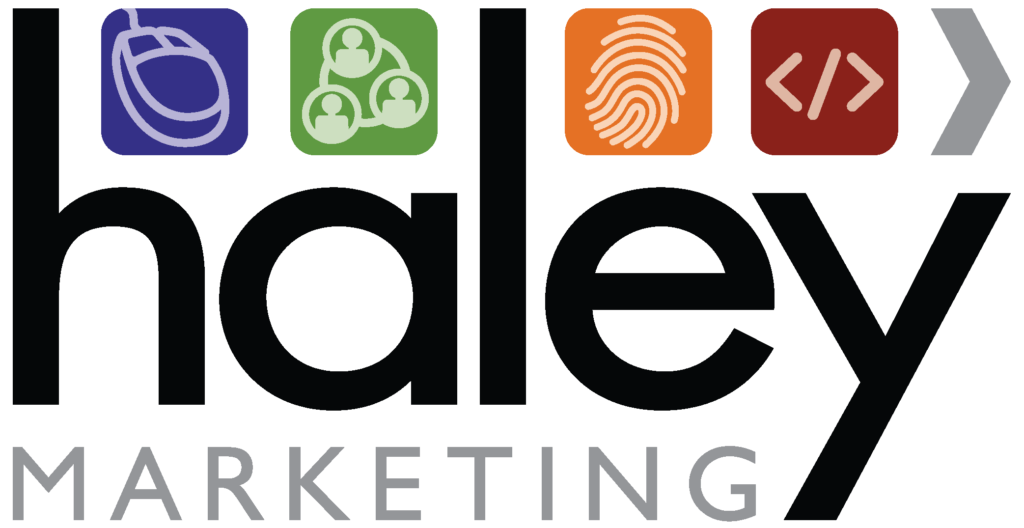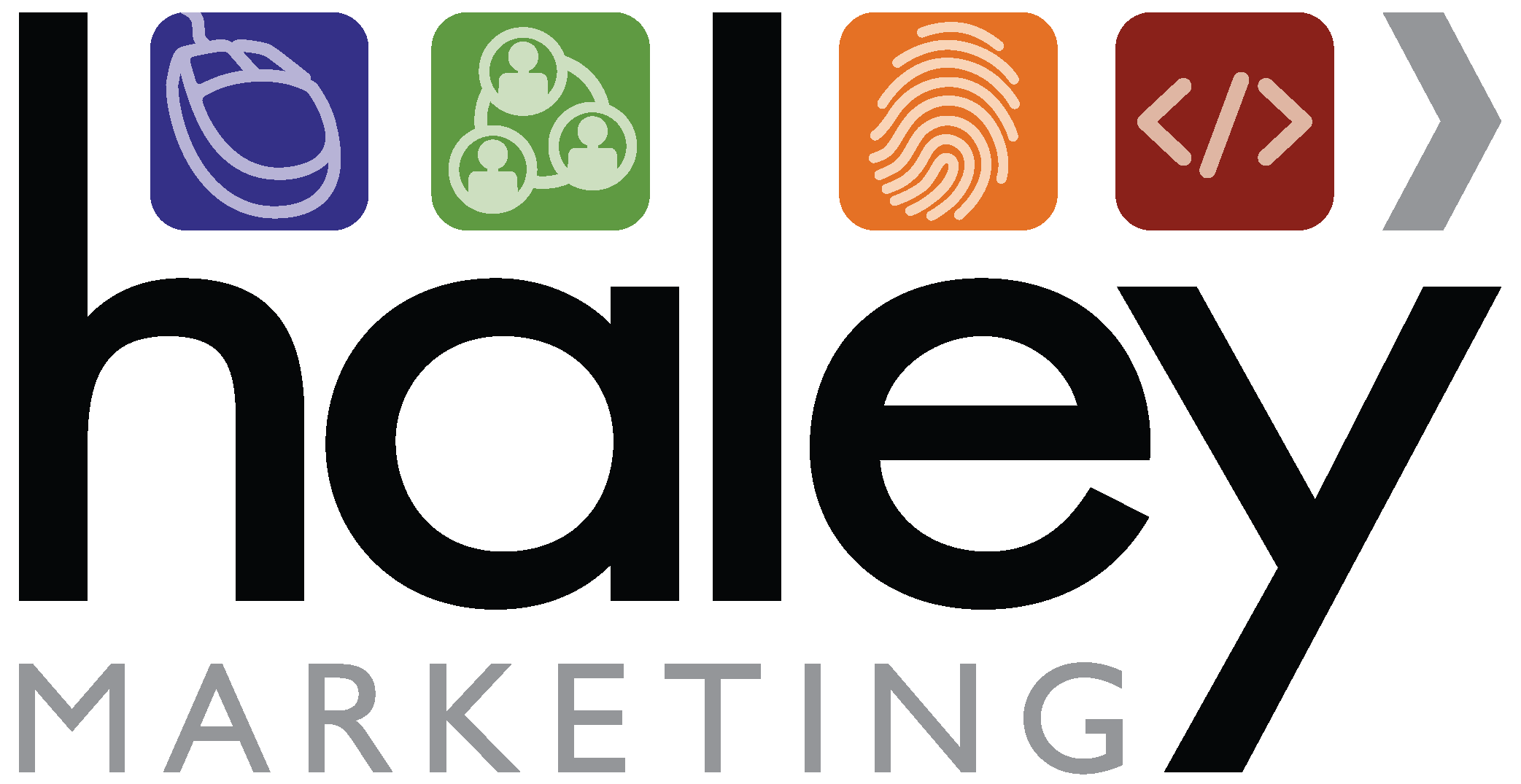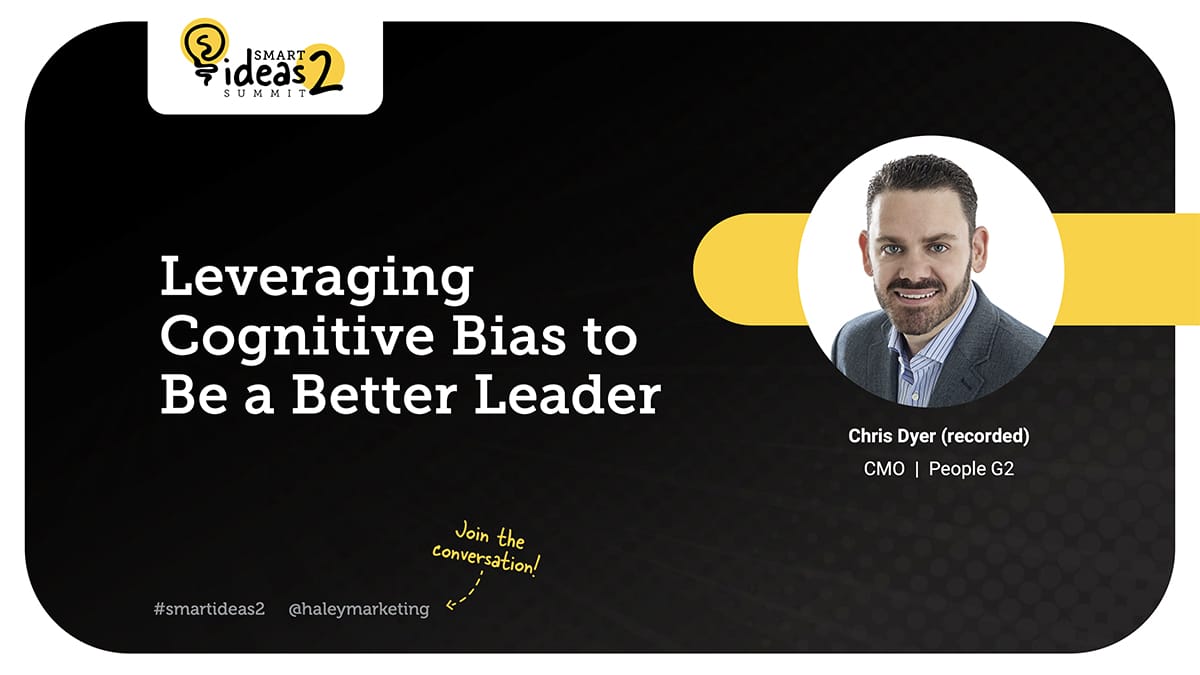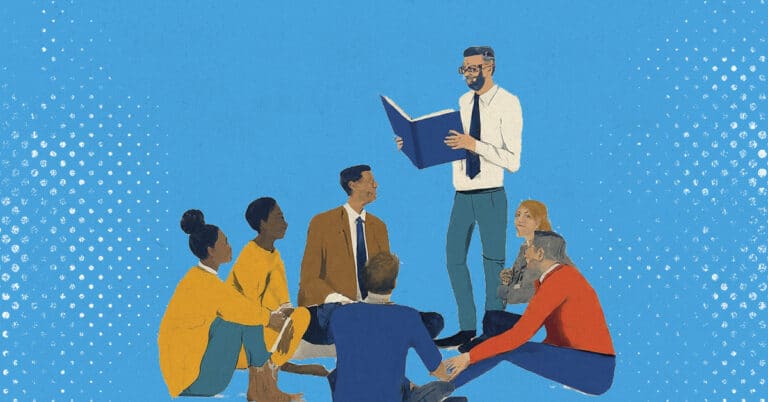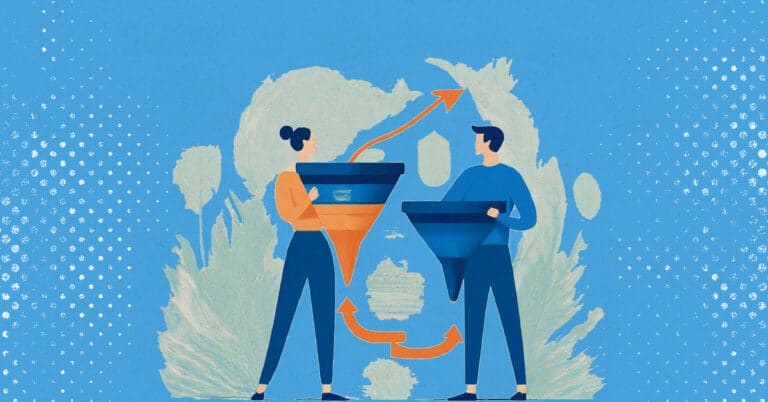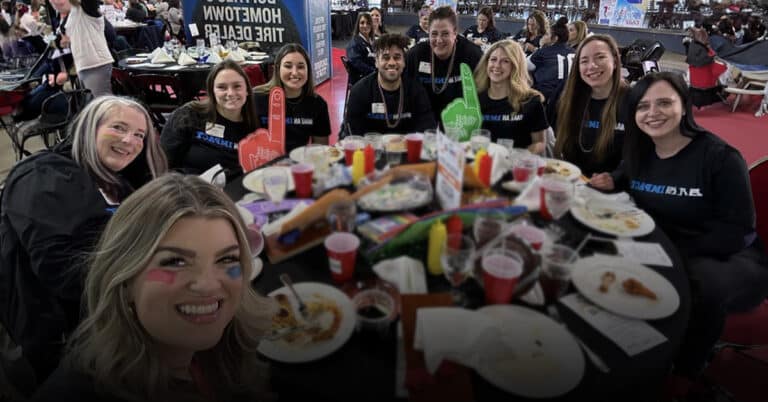7 hours. 14 speed talks. Priceless ideas!
The SMART IDEAS Summit 2 was a BIG success! Thanks to everyone who attended and made this year’s Summit even bigger and better than last year. We got some great feedback, including:
“I loved that it covered multiple topics….and that they were all relevant”
“There was a ride range of topics that appealed to every position in staffing – marketing, recruiting, sales, and even top-level management.”
If you missed a session, want to re-watch a favorite, or share any of the presentations with your friends or colleagues, we’ve got you covered:
The SMART IDEAS Summit 2 Content Is Available on Demand!
Access the free recordings and slides for 14 educational presentations from some of the smartest minds in staffing here. Simply enter your contact information, and then click on any session to start viewing!
Session Recap: Leveraging Cognitive Bias to be a Better Leader
In this presentation, Chris Dyer, bestselling author and company culture expert digs in to how you can create positive change within your organization by becoming aware of cognitive biases:
Video Transcript
Chris Dyer:
Hello, and thank you for joining me here for today’s Haley Marketing event. My name is Chris Dyer, and I’m excited to talk to you today about leveraging cognitive biases to be a better leader. In fact, this is one of the areas where we find leaders are the least educated, and it causes some of the biggest problems inside of organizations. I’m going to walk you through some of the most common ones that we might see and give you some suggestions on how to solve them. If you don’t know me, my name is Chris Dyer, I’m a two time bestselling author. I’m a recognized company culture and change management expert, as well as a remote leader and expert as well.
Some of you may also know that I had a company called PeopleG2, which I sold at the end of last year. It’s now an AccuSource company. A lot of the techniques and strategies and things that I’m going to talk to you about today, we’ve tested and dealt with in our own organization and had great results. Then I’ve gone and been able to take that and train, and work with other organizations, which I’ll talk to you about in a moment. So this really has helped us be a best place to work, year after year. A fastest growing company, five times with the Inc. Magazine. We’ve garnered quite a bit of social reputation around the internet for the cool things that we’re always doing, for being on the forefront of thinking about culture, work, leadership, and for thinking about how we can be the best place for our employees to work.
This lens is really through the research that I did in creating my first book, and so these are the seven pillars that a great company…
To have a great culture, you must do these seven pillars. But what’s interesting is in the third part of the book: how to create change. How do we take these pillars? If you decide, wow, we could be way more transparent and that would help us be a better organization, how do you create the change to do that? Well, cognitive biases, which I also like to call brain tricks, is one of the most important issues. Have you ever been in an organization, had a great idea and planned to do something cool, and then it never really got done, nothing ever really changed? You ever had that happen? It’s often because we’ve not dealt with cognitive biases. We’ve not used some of these brain tricks to our advantage or been aware of them to make sure that they’re not impacting us.
Now, you’ll be happy to know, a lot of great organizations are thinking about this stuff too. In fact, they’ve brought me in to do trainings around this, around difficult conversations and remote work, and company culture. And I think a part of their DNA, of why they are leaders in their different markets or different industries, because they do think about this type of work and how to be better for their company, day in and day out.
Cognitive Bias
We’re going to start today with a little bit of a story. Many years ago, I took my two oldest children to the safari park in La Jolla, California. If you ever get a chance to go, I highly recommend it. It is the least zoo of all the zoos I’ve ever been to. Most of the animals are free and walking around in this big Serengeti area, the predators have their own very large area, although they’re a little bit more secluded, and obviously we can’t have lions and cheetahs running around freely, but they have, compared to other zoos, a pretty good area.
Then there are some places where they have much smaller creatures called jerboas. Now, we got to stay the night inside the park. It was an amazing experience, except when I woke up at 3:00 AM, hearing the lions roaring and forgetting where I was and thinking for moment, I might be eaten. They brought out this cute little creature and asked everyone, “What do you think this is?” They started with the kids and the kids all said, “It might be a rabbit, might be a kangaroo.” Then they asked the parents, the parents said, “Rabbit, kangaroo.”
But the scientist said something that has stuck with me and really caused me to start this beginning of thinking about cognitive biases. Because when she said to me and the group, “When we don’t know something, and we’re not aware of it, we’re not thinking about this problem. When we see something new, we’re asked to make a conclusion, we take facts already in our brain to make up a story, to decide what something is, to explain something new.” Nobody said, “I don’t know what this is, this could be anything.” No, we saw floppy ears, we saw big hind legs, everyone said rabbit or kangaroo and that was totally wrong. 100% of the people there were wrong.
This little guy or girl is just a glorified rat. Just evolved in such a way that looks kind of like those other creatures, has big hind legs. It’s not a marsupial, just has big ears. But because none of us had ever heard of this creature, none of us knew what it was, we assumed it must be something we already know, and we made a bad conclusion. Light bulbs went off in my head. I was like, “Oh my gosh, this explains so much about work.” When we don’t share enough information with people, they’re trapped in making decisions or conclusions with the limited amount of information that they have, and that creates chaos inside the organization.
How do we deal with this? Got to remember that you don’t know what you don’t know. If you are active and you are thinking about it, and you’re being really, really cognizant of the fact that, if I see something new and I don’t know what it is, I mean, maybe it’s something new, maybe it’s a whole new thing, and it’s not something that I have in my brain. We want to be really aware of and avoiding confirmation bias, which is just taking in only information that agrees with what we think we already know. One of my favorite quotes from Epictetus is:
“When we think we know something, we can’t possibly learn anything new, or we can’t possibly be challenged.”
So if you believe that you know exactly what this creature is, you can’t possibly learn anything new if you’re not willing to hear new evidence, new information. And confirmation bias is when we’re only willing to accept information that aligns with our current beliefs or facts in our head. Then we want to make sure that we lead with bad news, okay? We can lead with difficult things, and this can really help us create opportunities for people to be more aware that maybe we need to think about things in a different way.
If you’ve ever done the cr@p sandwich, the good news, bad news, good news, you’re actually setting people up not to believe you and to turn you off. In this setting, if we start with the bad and then end with the good, people rate with a better experience, and they’re more open to saying, “Maybe I don’t know something, maybe I have something new to learn here.” And they become more curious and inquisitive to whatever it is we’re talking about.
Fundamental Attribution Error
Now, there are some more cognitive biases that we want to make sure we talk through. The first one is the fundamental attribution error. Long name, but it’s a pretty simple one to understand, and this one happens all day long in every part of your life. What this one says is that we apply a different standard to explain our actions than we do the actions of others. Here’s good example, you’re walking down the street, you bump into somebody, you’re on the phone, you bump into them, you don’t say you’re sorry and you walk along.
Later on, someone says, “Why did you bump into that person? You didn’t even say you were sorry?” And you might say, “Oh, I was on the phone with my mom, she fell or she’s very sick. I was dealing with an emergency.” Like I had a good reason why I acted like a jerk and bumped into somebody. But if those roles were reversed and you were the one walking in the street and someone bumped into you while on the phone, didn’t say anything and kept going on, it is our natural inclination to say, “Well, that person must be a bad person. They must be a jerk. It’s because they’re a man, because they’re a woman, because they’re this race, because they are old, or young,” or something I can observe about them externally to justify and explain why this thing happened.
Maybe you’re in New York and you say, “Oh, all New Yorkers are rude.” Maybe you’re in another country. Maybe you’re in Paris, and say, “All Parisians are rude.” You look at someone and you make a judgment, and you assume it’s something of their exterior that explains their behavior. But with us, we use our internal reasons to explain why this behavior happens. So how do we use this? If someone does something to upset you, does something wrong, does something that is really bothering people at work, don’t ever assume it’s an external reason. Go back and dig into, “What’s going on with you? What’s happening? Are you okay? Are you dealing with some stresses at home right now?” Assume there’s an internal reason that is causing their behavior, see if you can’t connect and uncover that to come up with a better outcome.
The Halo Effect
The second one is the halo effect. The halo effect is two parts, you can be aware of it and you can use it. Halo effect is that people who dress nice, who look nice, movie stars, professional athletes, this is why they put them in advertisements, we assume that if they suggest something, do something, that they must know better because they are a successful person. They’ve had success in some part of their life, they’re a great movie star, they must know which cologne is the right one, or which watch we should be wearing, right? That’s not necessarily true. So at work, just because someone is a high performer in one area, doesn’t mean they’re going to be a high performer in another area. A great salesperson may not make a great accountant, and vice versa.
The way you can use this to your advantage though, is to make sure that at work, whether you’re remote or in an office, that you show up to your best, whatever that is for you. Do you shave? Do you put on makeup? Do you wear a collared shirt? Do you wear nice clothes? Or do you show up in your pajamas with a hat, and looking like you haven’t done anything with yourself in a week? People will judge you based on your appearance, and assume the more well put together you are, the more credible you are, and the more likely they are to trust or give you a chance with what you’re doing.
It’s a good way to influence people as well, if you lack confidence or have a little bit of that imposter syndrome. If you’re wondering, “Am I really the one who should be talking about this?” Show up totally confident, fully looking your best, whatever that is. You’ll see a difference in how people interact with you. But the biggest one here is to not assume that someone—because they look good or have been a top performer somewhere else—is going to do well in another project. We need to have a much more objective standard when we assign people.
The Availability Heuristic
Then the last one I really enjoy is called the availability heuristic. We tend to prioritize recently learned information, and this goes back to that jerboa story. Meaning if I read a brand new article that said something, I’m more likely to bring that up at a social gathering, at a party or a work meeting, because I just learned it. And we, for some reason, give that more credibility and more weight than we do information we learned a long time ago, even though the information we learned a long time ago may be more valid, more relevant, and more important. So be careful that we don’t give weight to brand new information unless we can validate that it is good, and it is better. Just because it’s new, doesn’t make it better. Just because it’s something that you just learned, that doesn’t mean that it’s the right thing.
We often have staff come to us with the newest, hottest, greatest thing. That’s great, we want to be open to new ideas and new things, but we need to validate, and we need to make sure that we understand it before we just suddenly incorporate it.
Set Yourself Up For a Yes
Now there’s another area that we really need to worry about: are they physically ready? There’s some wonderful research by Amos Tversky and Danny Kahneman that showed people who are too hot or too cold, tend to default back to no, and people who are hungry tend to default back to no and not listen, and not be open and willing to talk to you. So make sure you don’t have that important meeting at 11:30, right before lunch, right? Take people to lunch and have that important meeting. Make sure you’re not having a meeting in a very hot place or a freezing cold conference room, you’re going to impact people’s ability to be open and willing to say yes to you. There’s an incredible amount of research around this. You can look up the book, The Undoing Project or Thinking, Fast and Slow, but it is crazy to me that when matters so much.
Encourage Independent Thinking
Another cognitive bias you want to think about at work is group thought. This little brain trick here, there’s a couple things that we can do to help people not get into that habit of just agreeing with everybody else, or not feeling like they can disagree. We want to ask our people to come to their own conclusion before they consider the conclusions of others. Now this may run counter to what you believe or what you’ve heard. We often ask people to be open-minded and to hear other people’s opinions, and that’s true, but we want people to decide for themselves, to evaluate an idea and decide on their own, and then come open-minded to hear other people. We find that that practice helps them be more confident if they feel like maybe they want to disagree or there’s a different way we should do it.
If they don’t feel comfortable disagreeing, then we need to coach them, to ask the group, “Would it be okay if I disagreed for a moment?” This one always works. People always go, “Sure, yeah, disagree. We’d be happy to hear your opinion.” But you set it up to now you feel like there’s going to be some good psychological safety. And if that doesn’t work and if you have someone who’s maybe really introverted, and they just can’t do that, they might try this trick, which is, if everyone in the group seems to really want to do something and you’re like, “I don’t really think this is a great idea. We tried this before in the company I was in before and they totally bombed on this,” but you don’t want to tell everyone this is the stupidest idea you’ve ever heard.
You could say, “Hey everyone, get it, everyone’s going to go this direction. But what if we didn’t do this? What else would we try? If this wasn’t a possibility, if we couldn’t do it the way you’re suggesting, what else might we try? What else would we consider?” Then you start getting people saying, “Well, if we couldn’t do that, we might do this. We might do this.” And someone might go, “Oh, well that actually might be a better idea.” And it’s a way to get them to think that it was their idea to think of a different solution, than you saying, “Hey everyone, this was a really dumb idea.”
How to Counter Cognitive Bias
All right. I promised you a solution here and I think that this is probably one of the best ways that you can counter some of these cognitive biases, that you can really help your staff level up and be a better leader very quickly. Now, if you are leading a small team, you can do this. If you have a company and let’s say your company is 50 people or so, or less, you can use this. If you’re bigger than that, then you might want to break this into departments. So you’re not doing this for just everyone, you might break this up into maybe sales and marketing gets this question over here, customer service gets it, or however you want to break it up.
Ask One Question Every Week
But what you do is you ask one question every week and that’s it. Start with some positive things like, “What’s going really well right now?” Or, “Who in the company consistently is your go-to person, who’s always killing it for you? Who’s totally awesome?” Get people comfortable, get them… And you’re going to get great information. You may find out, wow, I didn’t know our sales were doing really good in this area. Or oh geez. I didn’t know that that person was so smart, helping so many people, right? Gives you a really, really clear indication of what’s going on there. Then we can start to ask other questions like, “Where should we be thinking about improving? Where are you struggling?”
I love to ask this question about once a quarter.
I ask my staff, “How am I getting in your way?”
That’s a tough one to swallow. I wouldn’t ask that on the first time you’ve ever done this, but after there’s been some time and people feel comfortable, asking them how you’re getting in their way, they’ll tell you, and you can start getting out of their way. Realizing if I just did these couple of things, man, my team could be so much more productive. They could move so much faster, they could be so much better.
Couple of little caveats here with this information. I will ask this question, I look at the data and then I’m able to very quickly incorporate changes or go back to the team or back to the company and share what I think I heard, and what I’m going to do about it. Am I going to celebrate it, or am I going to fix it? Whatever it may be. For about three months or so I usually tell people, “I want you to answer anonymously. Everything you tell me is going to be kept… I’m the only one who’s going to read it. I may repeat a general sentiment of what I’m hearing, but I will never show your answer to anyone. I will never read those words to anybody, so you have safety and psychological safety and trust that you can tell me if something’s really going wrong. And I don’t know who it is that’s going to tell me this, but we can look into it.”
Then for about three months, I will say, “I still want you to answer anonymously, but every answer I’m going to share with everybody else.” So we’re going to ask cool things like, “What should we be focusing on? What new products or services should we be considering? Who’s the unsung hero this month at the company?” We’re going to ask these fun, cool questions, right? And then we’re going to share those answers with everyone in the company so that they all can see each other’s thoughts and wonderful comments, and allows us to… you could do it week by week, you could do it month by month, it doesn’t really matter. But just be very, very intentional and clear about when you’re going to keep it totally secret and when you might share it. Or you could just do one or the other. I would say, if you’re going to pick one or the other, just keep it totally secret and don’t show anybody, just only talk about the sentiment.
This allows you to make small, incremental changes every single week.
To test what you know, to make sure you have the right information, and have a pulse on how your people really are reacting, how they’re feeling, how they’re working. And to get ahead of any issues that you may not be aware of, with your staff, with your customers, with your vendors, with your bottom line, and to have a better company.
If you want more leadership information and suggestions, I’m on TikTok. I’m on Instagram reels. I do four or five videos a day there, so if you’d like to learn more, please join me in one of those communities, I’d love to have you. If you have a question, you can send me an email. You can go to my website, there’s lots of great resources there, you can send me one there. Or there is my direct office line, you’re welcome to text me. I just ask, if you text me a question, let me know who you are and where you’re from so I know who’s asking, and maybe where you found me so I can make sure I direct my questions based on the information you probably heard today.
Want more smart ideas from the smartest minds in staffing?
Access the free recordings and slides for 14 educational presentations from the SMART IDEAS Summit 2.
